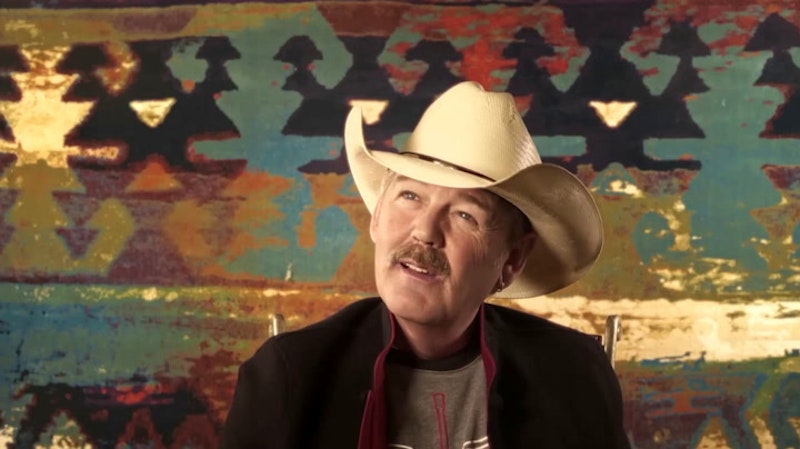In 2015, a friend and I pretended to own a local business to get neon carpet samples. We researched the American manufacturers who produce carpets for arcades, bowling centers, and skating rinks, tickled by their outdated websites as we filled out forms for free tiles of blacklight-friendly patterns called “Starcopia” and “Celestial Splash.” No one replied to our inquiries, and we never gathered enough crazy carpet pieces to make into one big rug. Picking past the drop-shippers and Wayfarers of Google now, eight years later, you can still find several American companies peddling carpets of all types, most of whom operate out of Dalton, Georgia, the setting of Carpet Cowboys.
Memory, the documentary’s production company, has produced other Baltimore-based filmmakers like Theo Anthony (Rat Film; All Light, Everywhere) and Marnie Ellen Hertzler (Crestone). Carpet Cowboys shows us the still-local world of carpet-making and selling in Dalton before focusing on Roderick James, a Scotland-born self-styled textile cowboy. The movie prefers to keep its eyes on the subjects, rounding out its main cast with a father-and-son team, a kooky rock collector, and Jon Black, a country musician living with Roderick.
Watching Carpet Cowboys makes you ask, where and how did carpets used to be made before over 80 percent of American and about half of the world’s carpets started emerging from Dalton’s factories? The carpet-testing process: entering a drab fluorescent room to walk in circles on sections of carpet over and over and over again, all in silence, or meticulously pouring life’s great substances (real feces, synthetic vomit, ice cream, and blood) onto carpet samples to see how easily they’re cleaned off. As my boyfriend shouted 20 minutes in, “So much goes into carpet!”
At a lean 85 minutes, Carpet Cowboys doesn’t go deep into production processes. Tantalizingly vague shots show women manipulating fibers and overseeing mechanical looms, though they remain mute background players. Still, there’s great delight in seeing human beings handle physical items we’re all familiar with. True family businesses still exist, slick professionalism isn’t necessarily the norm, and Dalton comes across as a boom town still booming against all odds of globalization, consolidation, and private equity. Lloyd, co-founder of Caldwell Carpet and scene stealer, shows off his business’ “handmade ‘CARPETS’ “sign, painted in primary-school colors with puffy letters—all before revealing its astonishing, hilarious provenance.
There are the designs themselves. In the mid-2010s, there was fervor over Portland International Airport changing its carpet design from one abstract teal to another; and there’s the enduring popularity of that purple-and-blue Solo cup pattern “Jazz.” Our hunger for the art of public spaces and objects shouldn’t be underestimated. The people want weird carpets! Doug, the overall-wearing son at Caldwell, smiles as he shows us his favorite carpet pattern, a dark floral that wouldn’t be out of place on a 1990s party dress or a piece of ornate bathroom wallpaper. The wildest carpet is rolled out by Doug and Lloyd; made for the Masonic Fellow Craft degree: it features a complicated staircase design corresponding to a 45-minute lecture. Though Roderick is a freelance designer with decades of experience and at least one award for, as he says, “the best rug… in a price point,” we see few of his old designs and nothing new. His desk is piled high with old business cards, and we see him contacting leads and losing contracts, but further visual evidence of Roderick’s career might serve to better contextualize his decline.
The film meanders just like executive producer John Wilson’s work. We meet Roderick at the beginning of a steep decline: with his freelance business failing, he creates jingles for impermanent glue before moving to the Philippines to join his internet sweetheart and expand his business. Scenes of Roderick slowly become the focus, his housemate/friend Jon Black uncomfortably hovering around the edges, a genuine friend. Jon’s belief in and love for Roderick wavers as Roderick spins his wheels and indulges in unconvincing self-talk. The reasons for continuing his cowboy schtick seem cloudier by the day.
Then the pandemic hits. Nothing pans out. As audience members, we might’ve momentarily believed in the possibility that, in some pocket of the U.S., the American Dream lived on, but the last third of the film destroys that idea. Carpet Cowboys shows—especially in wonderfully costumed and wordless fantasy sequences—that the modern hustler, denied the opportunity to sell, just wants to perform.

